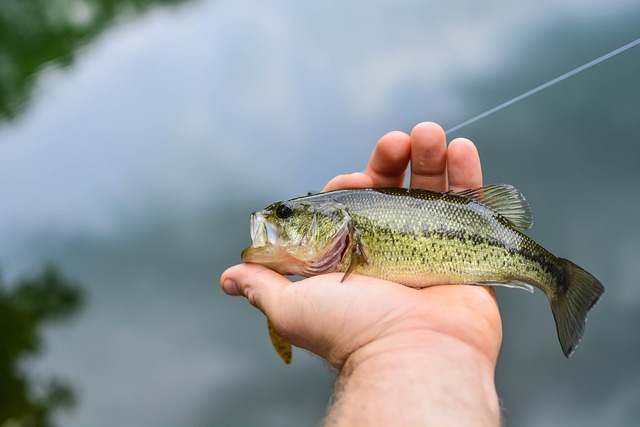Bass fishing is a popular sport enjoyed by millions of anglers around the world. One of the most important aspects of successful bass fishing is selecting the right weight. Whether you’re a beginner or an experienced angler, using the right weight can make all the difference in your catch.
In this guide, I’ll cover everything you need to know about bass fishing weights, including the different types of weights, factors to consider when selecting a weight, how to rig and use different types of weights, and best practices for using weights safely and responsibly. By the end of this post, you’ll have a better understanding of how to choose the right weight for your next bass fishing adventure.
Different types of bass fishing weights
There are several types of weights that anglers can use for bass fishing, each with its own unique advantages and disadvantages. Below are three of the most common types of bass fishing weights:
- Bullet Weights: Bullet weights are one of the most popular types of weights used for bass fishing. These weights have a streamlined shape that allows them to slide through the water and reach the bottom quickly. Bullet weights are available in a range of sizes and are often used with soft plastic baits.
- Drop Shot Weights: Drop shot weights are designed to be used with the drop shot rig, which is a popular rigging technique for bass fishing. These weights are typically small and cylindrical and are attached to the line using a special clip. Drop shot weights allow the bait to stay off the bottom and can be adjusted to different depths.
- Tungsten Weights: Tungsten weights are a more expensive option, but they have several advantages over other types of weights. Tungsten is denser than lead, which means that tungsten weights are smaller and more sensitive than lead weights. Tungsten weights also have a higher sensitivity, which can help anglers detect even the slightest bites.
Each type of weight has its own unique advantages and disadvantages, so it’s important to choose the right weight for the specific fishing conditions you’ll be facing.
Factors to consider when selecting a bass fishing weight
When selecting a weight for bass fishing, there are several factors to consider that can affect the effectiveness of different types of weights. Some of these factors include:
- Water Depth: The depth of the water you’ll be fishing in can impact the weight you choose. In deeper water, heavier weights may be necessary to get your bait to the bottom quickly. In shallower water, lighter weights may be more appropriate.
- Water Temperature: Water temperature can also impact the weight you choose. In colder water, bass tend to be less active, so a lighter weight may be necessary to entice them to bite. In warmer water, heavier weights may be necessary to get your bait to the bottom quickly and attract the attention of more active fish.
- Current Conditions: The strength of the current can impact the weight you choose. In strong currents, heavier weights may be necessary to keep your bait in place and prevent it from drifting too far from your intended target. In weaker currents, lighter weights may be more appropriate.
- Type of Bait: The type of bait you’re using can also impact the weight you choose. For example, soft plastic baits may require a different weight than hard baits or live bait.
How to rig and use different types of bass fishing weights
The way you rig and use different types of bass fishing weights can impact their effectiveness. Here are 3 tips for rigging and using three common types of bass fishing weights:
- Bullet Weights: To rig a bullet weight, simply slide the weight onto your line before tying on your hook or bait. The weight should be positioned above the hook, with enough space between the weight and hook to allow for the bait to move freely. To use a bullet weight, cast your line and allow the weight to sink to the bottom before starting your retrieval. The weight will help keep your bait near the bottom, where bass tends to feed.
- Drop Shot Weights: To rig a drop shot weight, tie a hook onto the end of your line and attach a drop shot weight to the line using a special clip. The weight should be positioned below the hook, with the length of the line between the hook and weight vary depending on the depth of the water you’re fishing in. To use a drop shot weight, cast your line and allow the weight to sink to your desired depth. Gently lift and lower your rod to create a subtle motion that will entice nearby fish.
- Tungsten Weights: To rig a tungsten weight, slide the weight onto your line before tying on your hook or bait. Like with bullet weights, the weight should be positioned above the hook, with enough space between the weight and hook to allow for the bait to move freely. To use a tungsten weight, cast your line and allow the weight to sink to the bottom. Tungsten weights are smaller and denser than other types of weights, which can help you detect even the slightest bites.
Best practices for using bass fishing weights
Using bass fishing weights safely and responsibly is important for both the health of the fish and the environment. Here are some best practices to keep in mind when using bass fishing weights:
- Use the right size weight: Using the appropriate size weight for the conditions you’re fishing in can help prevent damage to the fish and reduce the likelihood of snagging or losing your gear.
- Avoid using lead weights: Lead weights can be harmful to fish and the environment. Instead, consider using tungsten or other eco-friendly alternatives.
- Dispose of old or damaged weights properly: Old or damaged weights can pose a hazard to fish and other wildlife. Dispose of them properly by recycling or throwing them away in the trash.
- Store weights properly: Store your weights in a cool, dry place to prevent them from corroding or becoming damaged. Consider using a tackle box or other container to keep them organized and easily accessible.
Conclusion
In conclusion, selecting the right weight is crucial for success in bass fishing. By understanding the different types of weights available, considering the various factors that can affect their effectiveness, and knowing how to rig and use them properly, you can increase your chances of catching more fish.
Remember to use weights safely and responsibly by choosing the appropriate size, avoiding lead weights, disposing of old or damaged weights properly, and storing them in a cool, dry place. You can enjoy a successful and enjoyable bass fishing experience by following these tips and best practices.









